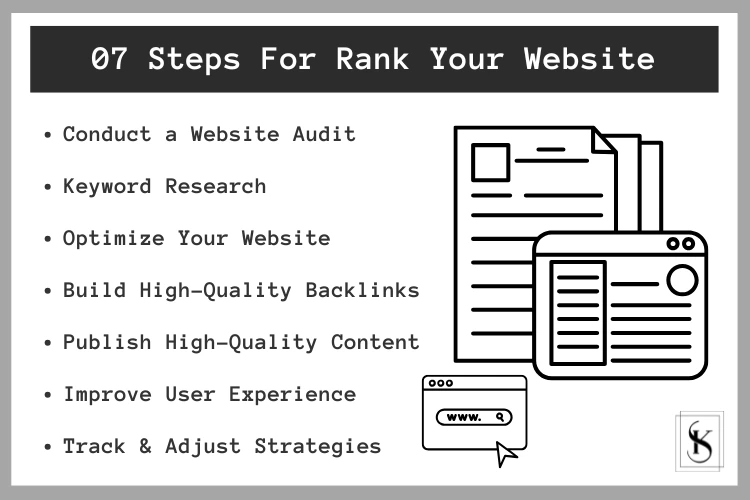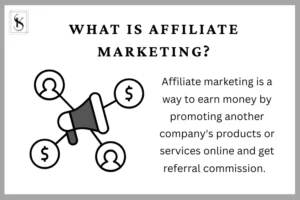Do you want to Rank Your Website on the Google’s First Page, but Every website owner have dreams of seeing their website on Google’s first page. Because it means more traffic, more leads, and ultimately, more sales. But with millions of websites competing for the top Rank, how can you achieve this in just 90 days?
The best part is that using the correct SEO tactics, content marketing, and technical optimizations, you can easily improve your rankings in just three months. This blog offers a step-by-step action plan to lead you to your destination. So let’s finish all steps.

Step 1: For Rank Your Website Conduct a Website Audit (Day 1-7)
First of all, you would like to test your current website performance. website audit can assist you to identify loop fall or mistakes which may be harming your rankings. With the help of website audit you can easily find out the problem and resolve it and make a user and google friendly website.
Major Areas to Review:
- Site Speed: Check the Google PageSpeed Insights loading time of your site, because if your site taking more time for loading, user can visit another website of SERP.
- Mobile-Friendliness: Test that your site performs well on every device.
- Broken Links: Employ tools such as Screaming Frog to detect and repair broken links.
- SEO Mistakes: Analyze on-page and off-page SEO problems using tools such as Ahrefs or SEMrush.
Solve or correct all of this error, because this is most important part for the rank your website. After solve this jump to second steps.
Step 2: Keyword Research & Content Strategy (Day 8-15)
Keyword research is the foundation of effective SEO. Your goal is to find relevant search terms that your target audience is using.
How to Find the Right Keywords:
- Use Google Keyword Planner, Ahrefs, or Ubersuggest to discover keywords with high search volume and low competition.
- Focus on long-tail keywords (e.g., “how to rank your website on Google fast”).
- Identify competitor keywords using SEMrush or Ahrefs.
- Include LSI keywords (related terms) to improve content relevance.
Once you have the right keywords, create a content strategy. Plan to publish high-quality blogs, service pages, and FAQs around your targeted keywords.
Step 3: Optimize Your Website for SEO For Rank Your Website (Day 16-25)
Implement on-page SEO to make your website more search-engine friendly.
Essential On-Page SEO Tips:
- Title & Meta Descriptions: Include your primary keyword, “rank your website,” in the title, meta description, and headings.
- URL Optimization: Keep URLs short, clean, and keyword-rich.
- Internal Linking: Link relevant pages within your website to improve navigation.
- Image Optimization: Use compressed images and add descriptive alt text.
- Improve Readability: Use short paragraphs, bullet points, and subheadings for a better user experience.
Ensure each page is fully optimized before moving forward.

Step 4: Build High-Quality Backlinks (Day 26-45)
Backlinks remain one of Google’s top ranking factors. The more quality backlinks your website has, the better your rankings will be.
How to Get Quality Backlinks:
- Guest Blogging: Write articles for high-authority websites in your niche.
- Business Directories: List your website in relevant directories.
- Broken Link Building: Find broken links on other websites and suggest your content as a replacement.
- Outreach: Connect with bloggers and website owners to request backlinks to valuable content.
- Social Media Sharing: Promote your content on LinkedIn, Twitter, and Facebook.
Consistency is key—aim for 5-10 quality backlinks per week.
Step 5: Publish High-Quality Content Regularly (Day 46-70)
Google favors fresh, valuable content. If you want to rank your website faster, regularly publish helpful and engaging content.
Best Content Strategies For Rank Your Website:
- Write Blog Posts: Publish at least one blog per week targeting your chosen keywords.
- Create Evergreen Content: Focus on articles that remain relevant over time.
- Use Videos & Infographics: Visual content boosts engagement and SEO rankings.
- Update Old Content: Refresh older blog posts with new data and insights.
Ensure every article provides value and addresses user queries effectively.
Step 6: Improve User Experience & Technical SEO (Day 71-80)
User experience (UX) is a ranking factor. If visitors leave your site quickly, Google may assume your content isn’t useful.
Ways to Improve UX:
- Enhance Page Speed: Optimize images, enable caching, and use a Content Delivery Network (CDN).
- Reduce Bounce Rate: Add engaging content, videos, and interactive elements.
- Enhance Mobile Usability: Ensure your website is fully responsive.
- Secure Your Site: Install an SSL certificate to enable HTTPS security.
Improving these factors will enhance both rankings and user engagement.
Step 7: Track & Adjust Strategies For Rank Your Website (Day 81-90)
SEO is an ongoing process. Now that you’ve implemented key strategies, it’s time to track progress and make adjustments.
How to Track Performance:
- Google Analytics: Monitor website traffic and user behavior.
- Google Search Console: Check search rankings and fix potential errors.
- SEO Tools: Use Ahrefs, SEMrush, or Moz to track keyword rankings and backlink growth.
Adjust Your Strategy:
- If rankings are improving, continue your efforts.
- If rankings are stagnant, update content, build more backlinks, or improve site speed.
- Test new keywords and refine pages accordingly.
Conclusion
Ranking your website on Google’s first page in 90 days is possible if you follow the right SEO strategies consistently.
Key Takeaways:
- Conduct a website audit to fix technical errors.
- Perform keyword research and develop a content strategy.
- Implement on-page SEO best practices.
- Build high-quality backlinks to improve authority.
- Publish valuable content regularly.
- Enhance user experience and page speed.
- Track progress and adjust strategies as needed.
SEO isn’t an overnight success—it requires patience and consistent effort. Implement these strategies, and you’ll see your website steadily climb toward Google’s first page!
If you need expert guidance in ranking your website, don’t hesitate to reach out. Let’s grow your online presence together!



